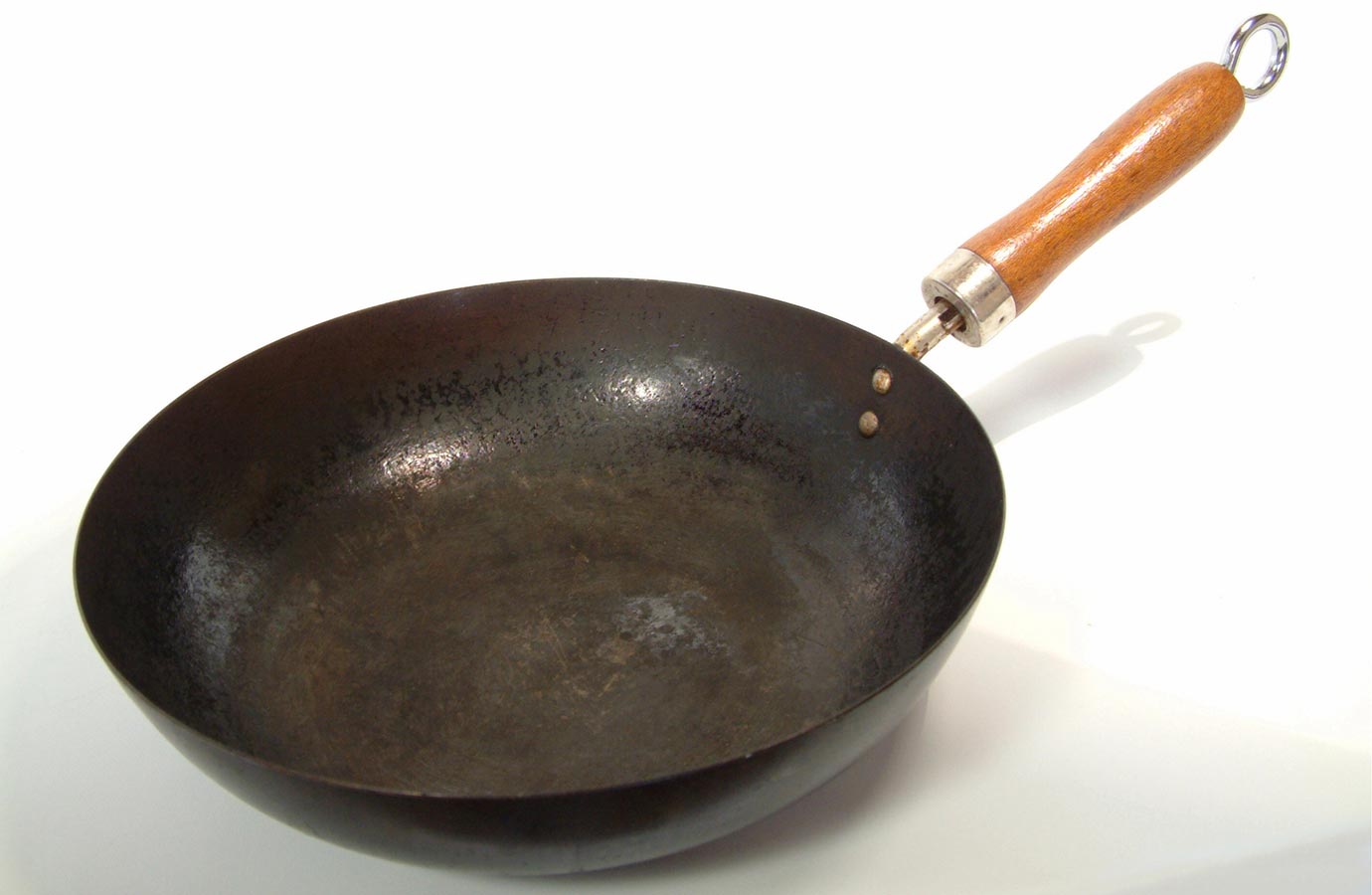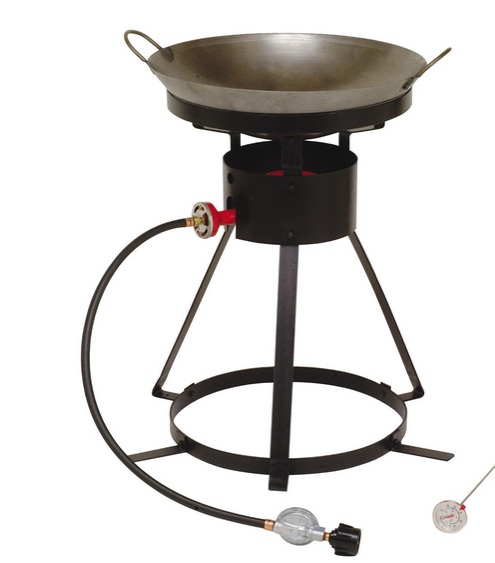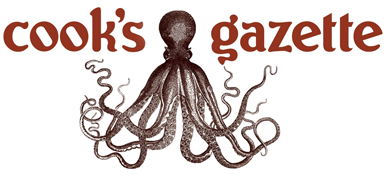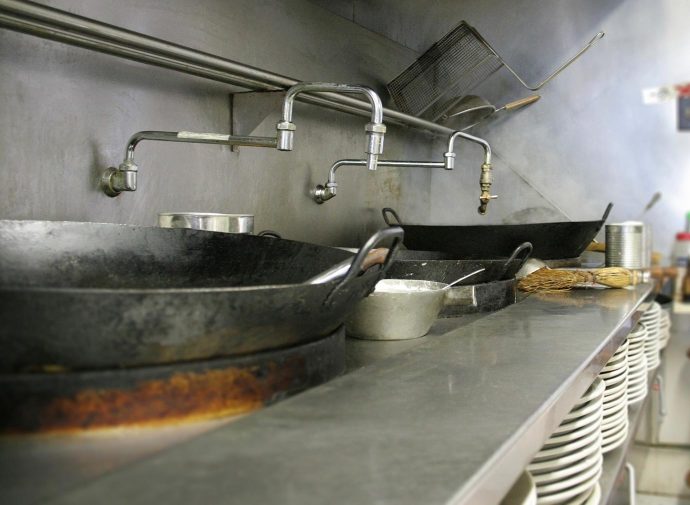Imagine wok hay as the fiery breath of a wok, imparting a special life force or essence from the wok into the food….all chefs aspire to stir-fries with this ineffable wok hay, or vital energy.
The Breath of a Wok, Grace Young
Like much of our cooking vocabulary, the term sauté comes from a French word “sauter” meaning “to jump.” Clarified butter or oil with a high smoke point is used to film the bottom of a pan. It is essential that there is enough room for ingredients to sizzle rather than steam. Use the new produce coming into the markets… asparagus, ramps, tender greens, spring peas, morels. These vegetables are marvelous simply sautéed with a little olive oil or butter and seasoned only with salt and pepper. They are delicious used in combination. Spring is also a great time for improvisation. Even when the weather remains grey and damp, reassure the diner that this is a new season by changing textures, by putting color and bright flavors into a dish and carrying these changes into the look and feel of the tabletop.
For sauté or stir-fries, ingredients are cut into uniform pieces, which may or may not be par-cooked. They “jump” or are quickly moved about in the hot pan to finish cooking. These dishes should be served immediately. Besides changing the cooking vessel from sauté pan to the iconic wok, in the past I didn’t really distinguish between the techniques of sautéing and stir-frying. Perhaps this is why my stir-fries were missing an authenticity, they lacked the prized yet elusive seared aroma and taste that are the essence of a stir-fried dish.
Grace Young, in her brilliant book The Breath of the Wok, describes the use of a wok as a way of life. For over 2000 years, history, culture, people and recipes all have come together in this important cooking vessel. The same pan is found in kitchens of both master chefs and novices. The more it is used and properly cared for, the greater the functionality and beauty of the surface or “face” of the wok.
In Hong Kong when a customer is served a stir-fry devoid of wok hay it is often interpreted as an ominous sign of bad luck…no investments or wagers should be made on such an inauspicious day.
Chief Instructor Chef Ronald Shao, Chinese Cuisine Training Institute, Hong Kong
Achieving wok hay in the home kitchen is a worthwhile goal and an impossible quest. The devil is in the details! But by paying proper attention to those details, you can certainly come closer to achieving the authenticity and vitality of stir-fry.
The biggest obstacle confronting the home cook is not having sufficient heat to get the fiery breath of the wok into stir-fry dishes. In restaurant kitchens, the round bottom of the pan sits down into the stove so that the intense flames lick all around the sides of the pan.
An aluminum collar often used in home kitchens stabilizes the wok but lifts it further from the flame. In many ways a large sauté pan, with greater surface area directly in contact with the heat, is preferable. This can be the best alternative if you have no room or desire for another piece of cooking equipment. The electric wok? Forget it! In general all “non-stick” woks are also useless. The cooking juices don’t stay in contact with the hot surface of the pan, therefore never provide the seared brown flavors and aroma, so essential to wok hay. The one exception I’ve tried is the Swiss Diamond cast iron wok. It’s expensive (the 14” wok is $249.00 on Amazon!) and takes time to heat, but then it maintains a very high, even temperature and gives ingredients a sear while still essentially being non-stick. If you are not constantly using your wok, it won’t develop the naturally non-stick patina, so this pan is a great choice. Lodge also makes a 14-inch pre-seasoned cast iron wok ($55-65 on Amazon) but I have not worked with it.
I’ve done quite a bit of reading and research. I’ve cooked in a great variety of pans. Here is what I consider to be the best option for a home kitchen: 14-inch flat-bottomed carbon steel wok with 2.00 ml steel weight.

Shop in Chinatowns for this pan or order online from Importfood.com for $27.95. A domed lid that fits just inside the top lip of the pan along with a spatula, ladle and skimmer are the traditional tools for stir-frying. They are sold along with the pan. Sur La Table also has a good wok for sale at the same price.

If you have the opportunity to cook outside, a wok burner that is fueled by a propane tank is a brilliant choice. The flames surround the pan, significantly upping the amount of heat. King Kooker 24WC Heavy-Duty 24-Inch Portable Propane Outdoor Cooker with 18-Inch Steel Wok is available from Amazon for $60.00
This burner also allows you to use a large round-bottomed wok, favored by Cantonese chefs who are considered to be the undisputed experts in the stir-fry technique.
It is easier to toss ingredients in the larger pan and to feel confident using intense heat when you are out-of-doors. The Webstaurant Store, an online retailer, sells a hand hammered 30 “ wok for $58.00 which will be surrounded by flame on the wok burner. Outside of cooking in a Chinese restaurant kitchen, this is the best opportunity to achieve wok hay.


The thing to remember about cooking in oil, regardless of whether you re sauteing, pan frying or stir frying, is that it is a dry heat cooking method.